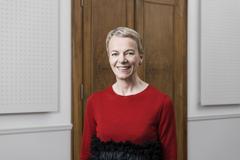3 questions for Virginia Richter about Fit for Future
After two years, the Fit for Future program has been consolidated in autumn 2024. Action areas that have either completed their projects or made significant progress, are handed over to the line organization. Virginia Richter answers three questions on what has been achieved in the program over the past two years and what the next steps are.
Fit for Future was launched over two years ago as a program to develop the university in a way that it will still be attractive and capable of delivering top achievements in 10 to 20 years' time. Where do we stand today?
Fit for Future has made us consider the university as a whole across organizational boundaries. We have achieved a better mutual understanding through intensive discussions between faculties and central administration on various strategically relevant issues. It is essential that we continue to foster this exchange.
Today, we already have a different form of dialog and cooperation. This is particularly evident in what is probably the most difficult action area, “Rethinking university structures”. We are now at a point where we are all convinced, or at least can understand, that a change in the University's organizational structures will benefit everyone involved. We will implement this major project together over the next few years.
Important initiatives and projects have also been launched or already completed in the other action areas. This was and still is associated with a lot of work, for which I would like to thank all those who have been and continue to be involved for their commitment. These changes are important because, as an institution, a university should not rest in itself, but constantly and deliberately develop and offer a contemporary working and learning environment.
As you mentioned, some projects have already been completed. The university management has therefore decided to keep only five of the twelve action areas in the program as from 2025. What does this mean for F4F?
The annual review of the action areas has shown that there are projects among them that have already moved into operating status or are close to doing so. These topics therefore no longer require special attention as part of the program. In addition, various stakeholders have repeatedly expressed the wish “not to overload the wagon”.
When the program was conceived, the desire to develop the university was felt coming from many areas of the university . The topics were determined together and defined as action areas in the F4F program. F4F thus became a comprehensive change program affecting everyone. However, many university employees are already confronted with a large number of projects and in some cases with changes outside of F4F. As a result, there was a perception that too much was being tackled at once. We have therefore decided to remove certain projects or action areas that have already been implemented or are very well covered in normal operations from F4F. For the time being, we are concentrating on larger projects that revolve around strategy - structure - culture.
What are the most important results so far?
We have achieved certain successes in all action areas. For example, the establishing of the project- and creative space “Ideas Lab”, to promote entrepreneurship among students, is very pleasing. In the action area “Rethinking university structures”, we are now starting with the implementation in two faculties, and I am very excited to see what solutions we will find to improve working at the university, particularly in teaching and research.
22.01.2025

